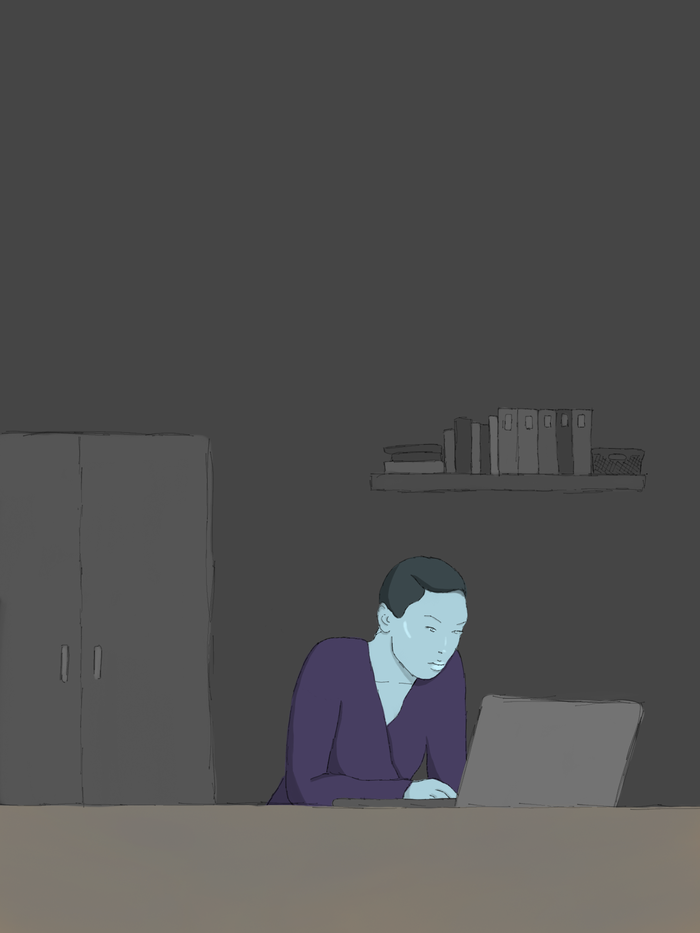Maths is a man’s world. You can see it as clear as day in admissions to study maths at Cambridge; in recent years, women have made up only 15% of the undergraduate maths cohort. However, once I had achieved my dream of making it to Cambridge, I didn’t even consider the possibility that my gender would affect my performance or enjoyment of the Tripos. I had already beaten the odds to meet my STEP offer — in 2016 only 37% of female offer holders did so compared to 52% of their male counterparts — and become a woman in STEM. Surely, it was just about the maths now?
It wasn’t until I received my first-year results that I realised how naïve I was. I had massively and unexpectedly underperformed compared to my high grades in example sheets and supervision reports throughout the year. This shock caused me to reflect; speaking to fellow female mathematicians, it was clear they too shared these bad results and bad experiences of the course. There was an almost unanimous feeling that the maths Tripos was not made with women in mind.
“Only one woman matriculating in 2016 received a first in Part II”
With my doubts about the teaching and examination process starting to grow, I decided to look at the data to see if there was a trend. I submitted a freedom of information (FOI) request to the university, asking for data on the progression from STEP to Part II of female and male identifying maths students who matriculated in 2015/16 (the most recent years to graduate unaffected by the pandemic). I expected the data to be bad, but it was truly shocking. Perhaps the most disturbing statistic showed that only one woman matriculating in 2016 received a first in Part II. Ironically, this could have been the reason why my FOI was rejected initially, because the candidate was easily identified in data.
Table 1. below displays the percentage of male and female students matriculating in 2015 and 16 — combined to create a larger data set — achieving each class or above in Part II (their final year grade). The total percentage of students achieving a third or above is less than 100% to account for a small number of fails, as well as discontinuations and extenuating circumstances.
Table 1. Cumulative %
|
Part II Class |
Male |
Female |
Total |
|
I |
33 |
7 |
30 |
|
II.i |
69 |
54 |
66 |
|
II.ii |
83 |
86 |
83 |
|
III |
88 |
92 |
89 |
Evidently, women are massively underrepresented in achieving firsts. There is a smaller but nevertheless significant difference of 15% between male and female students achieving the all important II.i or above which employers look for.
Table 2. Cumulative %
|
Part II Class |
Male |
Female |
Total |
|
I |
41 |
31 |
39 |
|
II.i |
84 |
79 |
83 |
|
II.ii |
97 |
99 |
98 |
|
III |
100 |
100 |
100 |
Table 2. presents the exact same data but for Oxford, with a 23% female cohort compared to Cambridge’s 15%. While there is still a gender gap at Oxford, it’s nowhere nearly as drastic as that of Cambridge. Accounting for Oxford’s more generous grading by interpolating, 24% of Oxford’s female students would achieve a first, which is considerably higher than the 7.0% at Cambridge. There is also much less of a difference between the percentage of male and female students achieving a II.i or above at Oxford.
The largest difference between the maths courses at Oxford and Cambridge is the admissions process, with Cambridge offer holders taking the STEP exams just after sitting their A Levels, whereas Oxford applicants take the MAT in October of their Year 13. Both the lower admittance and lower performance of women at Cambridge suggests that STEP is not an accurate test of all mathematical ability. Perhaps STEP, which is used to prepare future students for the Tripos, as well as being an admissions tool, is the first sign of a course that is not built for women.
“Studying at Cambridge [...] does more harm than good to female students”
To worsen the story, in March 2019 Mathematics Undergraduate Admissions Committee (MUAC) meeting the Chair of the meeting stated: “even after accounting for STEP women perform less well than men in Parts IA and II”. Clearly, studying at Cambridge — often regarded as the best place in the world to study maths — does more harm than good to female students. In this same MUAC meeting “the Committee were concerned about the non-completion rate for women. [Professor Gog] noted that non-completion also includes change of subject, which is anecdotally high in women”. In fact, 33% of the women matriculating into mathematics in 2016 chose to intermit or discontinue their studies at some point during the Tripos. While I understand that many students take this route for personal reasons unrelated to their studies, compare this figure to 14% of their male counterparts and 250 students total across the university.
Now to explore the possible reasons for this inequality between genders, many of which have likely been a feature of the Tripos since before women were even allowed to study it. Most of the following are anecdotal, as I do not have access to the appropriate data. However, I would hope that the faculty will take time to look into each one.
I believe a large contributor to the gender awarding gap in Cambridge’s undergraduate maths exams is the marking system; seemingly the greatest difference in examination systems between the university and Oxford. A student is awarded extra “bonus” marks if they reach a certain number of standard marks in an exam question; for example, if a student achieves 15 marks or more out of 20 in a longer exam question they are automatically awarded an additional 15 marks. This system rewards risk; students have to ask themselves in the heat of a time-pressured exam ‘should I potentially waste time attempting to reach the lucky 15 or just move on?’. Risk is typically a gendered attribute, nurtured by society in men and dissuaded in women. While I understand the faculty wanting to encourage students to reach the end result of a question — an important skill for research — it is possible to do so without using a risky step function; this could easily be replaced by squaring the raw mark achieved in the question for example.
Looking further into the extremely exam-heavy grading system highlights more faults. My female peers and I struggled to know how to prepare for our first-year exams due to the faculty’s refusal to publish solutions to past papers. Exam length is also relevant; Oxford chose to extend its maths exams by 15 minutes in 2017 because the department thought “female candidates might be more likely to be adversely affected by time pressure”. Introducing coursework (other than CATAM, the computing based current coursework) to the course could offer a solution that benefits traditionally “female” skills suited to research, like collaboration and risk-aversion; comparing students’ supervision reports to exam grades could show a need for this.
“awareness of gender representation shouldn’t be rare [...] directors of studies should champion representation”
Additionally, it’s widely acknowledged that a lack of role models is a strong contributor to the gender gap in STEM. This lack of representation continues in Cambridge, as only two of my 11 first-year lecturers, and two of my eight course supervisors identified as female. In a conversation about this issue with my director of studies, he told me that he tries to ensure that each of his female students has at least one female supervisor each year. However, this awareness of gender representation shouldn’t be rare and individualised; directors of studies and the faculty should champion representation and promote role models for female and non-binary students continuously.
Cambridge insists on an intense workload but the maths Tripos in particular puts huge pressure on students. While there is negligible research into the effects of workload on different genders, note that when A Level exams were cancelled in 2020 due to COVID, 23% of Cambridge’s maths undergraduate incoming cohort identified as female — the highest proportion of female students in recent years. Perhaps the absence of A Level exams gave female offer holders a more manageable workload and therefore reduced the stress they experienced while preparing for STEP.
The Maths Faculty do currently make some effort to address and reduce the negative effects of gendered society by hosting a welcome event to allow female and non-binary freshers to meet each other, as well as giving £500 each year to the Emmy Noether society, which aims to support these groups and further the connections made between these students. Similarly, the faculty and various colleges host many events to encourage female and non-binary school students to apply to the course. However, the faculty needs to realise that its course just simply isn’t suited for female students and that this isn’t female students’ fault but the fault of multiple system failures.
I deliberated for a long time over whether publishing this article would have the desired positive effect on female mathmos. Would reading this article set a female fresher up to fail? Would they feel like they were fighting a losing battle and create a self-fulfilling prophecy of underachievement? However, after consulting with my peers, I realised that it’s worse to suffer in silence. Female and non-binary students in STEM, as well as all subjects, need transparency — as it stands, the faculty meeting notes which discuss gender issues are not made public. This needs to change for students to be able to collaborate with each other and the faculty to create positive gender-inclusive change.
Undergraduate maths might not be changing, but the people studying it are; it’s time for the faculty to understand this, and to adapt the system so it doesn’t just benefit people like themselves. Even the educational buildings don’t accommodate us; on the first day of lectures I passed three lots of male toilets before finding the womens’! I don’t have a complete answer, and as a mathmo who pursues answers, this is infinitely frustrating and exhausting. What I can do is offer my experiences, which depressingly are probably yours as well.


